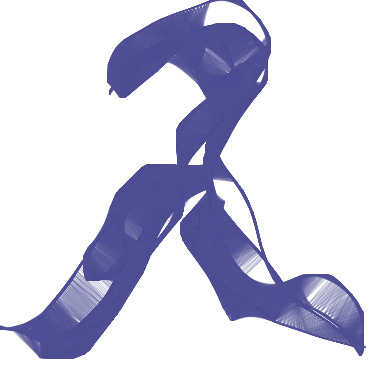
This is the Setoid.Functions.Injective module of the agda-algebras library.
We say that a function f : A → B from one setoid (A , ≈₀) to another (B , ≈₁) is injective (or monic) provided the following implications hold: ∀ a₀ a₁ if f ⟨$⟩ a₀ ≈₁ f ⟨$⟩ a₁, then a₀ ≈₀ a₁.
{-# OPTIONS --without-K --exact-split --safe #-} open import Relation.Binary using ( Setoid ) module Setoid.Functions.Injective where -- Imports from Agda and the Agda Standard Library ------------- open import Agda.Primitive using ( _⊔_ ; Level ) renaming ( Set to Type ) open import Function.Bundles using ( Injection ) renaming ( Func to _⟶_ ) open import Function.Base using ( _∘_ ; id ) open import Relation.Binary using ( _Preserves_⟶_ ) open import Relation.Binary using ( Rel ) import Function.Definitions as FD -- Imports from agda-algebras ----------------------------------------------- open import Setoid.Functions.Basic using ( 𝑖𝑑 ) renaming ( _⊙_ to _⟨⊙⟩_ ) open import Setoid.Functions.Inverses using ( Image_∋_ ; Inv ) private variable a b c α β γ ℓ₁ ℓ₂ ℓ₃ : Level
A function f : A ⟶ B from one setoid (A , ≈₀) to another
(B , ≈₁) is called injective provided ∀ a₀ a₁, if f ⟨$⟩ a₀ ≈₁ f ⟨$⟩
a₁, then a₀ ≈₀ a₁. The Agda Standard Library defines a type representing
injective functions on bare types and we use this type (called Injective) to
define our own type representing the property of being an injective function on
setoids (called IsInjective).
module _ {𝑨 : Setoid a α}{𝑩 : Setoid b β} where open Setoid 𝑨 using () renaming (Carrier to A; _≈_ to _≈₁_) open Setoid 𝑩 using ( trans ; sym ) renaming (Carrier to B; _≈_ to _≈₂_) open Injection {From = 𝑨}{To = 𝑩} using ( function ; injective ) renaming (to to _⟨$⟩_) open _⟶_ {a = a}{α}{b}{β}{From = 𝑨}{To = 𝑩} renaming (to to _⟨$⟩_ ) open FD IsInjective : 𝑨 ⟶ 𝑩 → Type (a ⊔ α ⊔ β) IsInjective f = Injective _≈₁_ _≈₂_ (_⟨$⟩_ f) open Image_∋_ -- Inverse of an injective function preserves setoid equalities LeftInvPreserves≈ : (F : Injection 𝑨 𝑩) {b₀ b₁ : B}(u : Image (function F) ∋ b₀)(v : Image (function F) ∋ b₁) → b₀ ≈₂ b₁ → Inv (function F) u ≈₁ Inv (function F) v LeftInvPreserves≈ F (eq a₀ x₀) (eq a₁ x₁) bb = Goal where fa₀≈fa₁ : (F ⟨$⟩ a₀) ≈₂ (F ⟨$⟩ a₁) fa₀≈fa₁ = trans (sym x₀) (trans bb x₁) Goal : a₀ ≈₁ a₁ Goal = injective F fa₀≈fa₁
Proving that the composition of injective functions is again injective
is simply a matter of composing the two assumed witnesses to injectivity.
(Note that here we are viewing the maps as functions on the underlying carriers
of the setoids; an alternative for setoid functions, called ∘-injective, is proved below.)
module compose {A : Type a}(_≈₁_ : Rel A α) {B : Type b}(_≈₂_ : Rel B β) {C : Type c}(_≈₃_ : Rel C γ) where open FD ∘-injective-bare : {f : A → B}{g : B → C} → Injective _≈₁_ _≈₂_ f → Injective _≈₂_ _≈₃_ g → Injective _≈₁_ _≈₃_ (g ∘ f) ∘-injective-bare finj ginj = finj ∘ ginj
The three lines that begin open FD illustrate one of the technical consequences
of the precision demanded in formal proofs. In the statements of the
∘-injective-func lemma, we must distinguish the (distinct) notions of injectivity, one
for each domain-codomain pair of setoids, and we do this with the open FD
lines which give each instance of injectivity a different name.
module _ {𝑨 : Setoid a α}{𝑩 : Setoid b β}{𝑪 : Setoid c γ} where ⊙-injective : (f : 𝑨 ⟶ 𝑩)(g : 𝑩 ⟶ 𝑪) → IsInjective f → IsInjective g → IsInjective (g ⟨⊙⟩ f) ⊙-injective _ _ finj ginj = finj ∘ ginj ⊙-injection : Injection 𝑨 𝑩 → Injection 𝑩 𝑪 → Injection 𝑨 𝑪 ⊙-injection fi gi = record { to = to gi ∘ to fi ; cong = cong gi ∘ cong fi ; injective = ⊙-injective (function fi) (function gi) (injective fi) (injective gi) } where open Injection id-is-injective : {𝑨 : Setoid a α} → IsInjective{𝑨 = 𝑨}{𝑨} 𝑖𝑑 id-is-injective = id